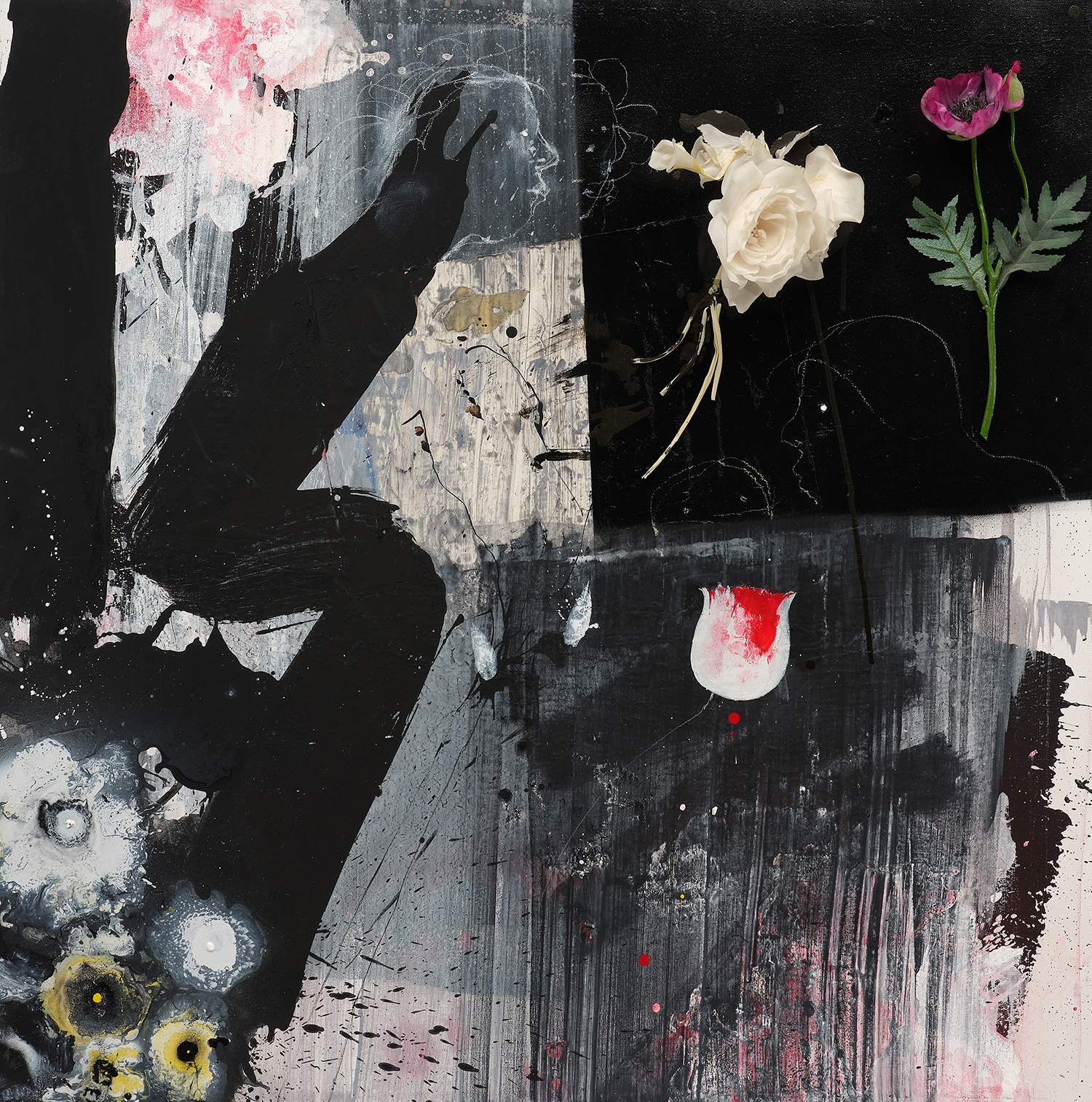VISIONS OF A MASTER PAINTER
“In the process of painting, for the one thing that someone sees, there are innumerable things that they never see.” Raymond Saunders
Raymond Saunders Paintings Dazzle at the Sonoma Valley Museum of Art
In a season of post-pandemic, impressive
Bay Area museum offerings (gold Egyptian artifacts, bejeweled fashions), the
diminutive Sonoma Valley Museum of Art in Sonoma, California, is offering one
of the most thrilling shows.
Raymond Saunders: On Freedom and Trust, curated by guest curator Shelby Graham and on view at SVMA through January 8, 2023, features 25 mixed media paintings by the Oakland, California master, some never exhibited before. Each painting vibrates with Saunders’ Big Bang energy and his genius for jazzy improvisation. Found flotsam attaches to seas of deep black. A flat artist’s palette, a yellowed news clipping, offensive racial stereotypes, iconic cartoon figures, a discarded candy box, bits of torn board or ripped wood, a crumpled paper towel stained blood-red—Saunders throws the profound, the mundane and the accidental into the mix. Recognizable yet always fresh, Raymond Saunders’ paintings and assemblages take the viewer on a voyage of discovery into “innumerable unseen things.”
The exhibition includes well-known works such as the huge 1991 Joseph Fitzpatrick Was Our Teacher, dedicated to the memory of Saunders’ beloved art mentor at Schenely High, Joseph C. Fitzpatrick (who was also Andy Warhol’s teacher), and a framed T-shirt produced by Saunders bearing his image of Jack Johnson, the Black heavyweight champion of the world from 1908 to 1915. But there are unknown recent works, painted with less assemblage elements, that are a departure.
Saunders is known for a 1967 pamphlet, “Black is a Color,” in which he argues against the metaphorical use of the concept of blackness. “Because I love black as a color, I can make it sing,” he says, and so he does. As the grounding color in nearly all 25 paintings, black in the art of this Black American artist alludes to many things: to race, certainly, to the wavelengths of the color spectrum, as a compositional element, and particularly in the paintings of the 2020’s to the cosmos, the density of deep space over which celestial objects wander in fixed or random orbits. The comparison to jazz is strong in his work—rhythm, lyrical flights of fancy, strings of associations, fragments of old memories held together by gravity and magic.
Raymond Saunders: On Freedom and Trust is not a show to breeze through. Each painting invites a long look. The beauty of his bold painterly marks and the freedom of his juxtapositions of materials demonstrate the trust he has in himself and his vision—along with a thousand rewarding subtleties that bring one back for another look. Each painting is compositionally strong, its formal elements pulled together so that the objects on its surface can play. In the newer work from the 2020’s bouquets burst out of their vases, stars explode, spirals do loop-de-loops, tulips and other flowers release their perfume, doilies and lace curtains shiver in the breeze while torn plywood and commercial and cultural signs (OPEN HOUSE, CAUTION) suggest worldly influences and perspectives.
Born in Pittsburgh, PA in 1934, Saunders was early recognized as artistically precocious and his talent was supported and encouraged by his family and teachers. He earned a BFA degree from the Carnegie Institute of Technology in 1961 and his MFA in Painting from California College of the Arts and Crafts (now CCA, California College of the Arts). In 1964 he was awarded the Rome Prize from the American Academy of Rome, the sole awardee that year in painting. Starting in 1956, as much of America held fast to racial segregation, Saunders spent time and exhibited within the greater social freedom of Europe.
He taught art during his entire career, primarily at Cal State East Bay-Hayward (where he is Professor Emeritus) and CCA. He has prioritized art education in the schools and is articulate when speaking about the improvisation and learning process inherent in his own fluid creative process. “My intention in teaching at a University was not to teach artists,” Saunders said. “I wanted to sort of contribute to wellbeing; I wanted to contribute to Freedom and the choice of being an artist.”
He has had multiple solo museum exhibitions, including at the M.H. De Young Memorial Museum, the San Francisco Museum of Modern Art, the Oakland Museum of California, and the Pennsylvania Academy of Fine Arts.
Raymond Saunders: On Freedom and Trust includes literary ephemera in vitrines. Quotes by Saunders are silkscreened on the walls, and a video of a spirited 1985 conversation between Saunders and the actor Danny Glover runs continuously in an adjacent room.
Raymond Saunders, Untitled, n.d., mixed media on canvas/wood, Courtesy of the artist and Casemore Gallery, San Francisco, and Andrew Kreps Gallery, New York. Click for full image.
